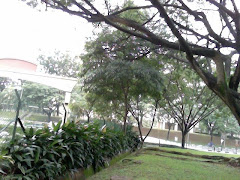Q1.Textbook p9 #25:
The Prime factorisation of a number is 2^4 X 3^5 X 7^2 X 11.
Write down 3 factors of the number that are greater than 100.
(Hint: 16 X 11 = 176, which is a factor.)
Answer:
2^4 X 3^5 X 7^2 X 11= 2 095 632
(a)2^4 X 7^2=784
(b)3^5 X 11=2 673
(c)7^2 X 11=539
Answer:
2^4 X 3^5 X 7^2 X 11= 2 095 632
(a)2^4 X 7^2=784
(b)3^5 X 11=2 673
(c)7^2 X 11=539
Q2.Textbook p9 #26:
The Prime factorisation of two numbers are 2 X 3^2 X 7^3 X 13 and 3 X 7^2 X 13^3 X 17 .
Write down 3 common factors of the numbers.
Answer:
2 X 3^2 X 7^3 X 13=80 262
3 X 7^2 X 13^3 X 17=5 490 303
and I'm stuck here...
Answer:
2 X 3^2 X 7^3 X 13=80 262
3 X 7^2 X 13^3 X 17=5 490 303
and I'm stuck here...






Zhi Chao
ReplyDeleteYour answers to Q1 (Textbook p9 #25) is correct.
Just wondering, what is the reason for multiplying all the factors together to get 2,095,632? Did you make use of this number to find your answers?
For Q2.Textbook p9 #26:
Perhaps we can look at the expressions as follows:
NUMBER A = 2 X 3^2 X 7^3 X 13
NUMBER B = 3 X 7^2 X 13^3 X 17
Can you find any common prime factors?
To find more factors, instead of writing them as index notation, try to rewrite the numbers in the form before expressing it as Index notation. Can you find some common factors across NUMBER A and NUMBER B?
Hope that helps.